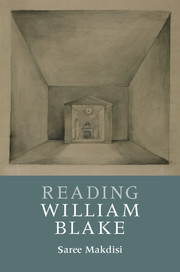7 - Making
Published online by Cambridge University Press: 05 May 2015
Summary
Little lamb who made thee
Dost thou know who made thee
– “The Lamb”Did he smile his work to see?
Did he who made the Lamb make thee?
– “The Tyger”Two of Blake's best-known poems, “The Lamb” and “The Tyger,” are about making, one of the central recurring themes in Blake's thought and work, along with joy and desire – notions from which it is inseparable. “Making,” for Blake, marks the convergence of our joys and desires with our imaginations; it is the truest and fullest form of imaginative practice. And hence, as I hope to show in this chapter, making might even be said to constitute for Blake the very essence of our being.
The relationship of making and being is precisely the connection explored by these two well-known plates, the one from Songs of Innocence, the other from Songs of Experience. “The Lamb” unfolds as a series of questions in the first stanza, framed by the pair of lines “Little lamb who made thee / Dost thou know who made thee.” A series of half-answers (“Little lamb I'll tell thee”) follows in the second stanza: “He is called by thy name / For he calls himself a Lamb: / He is meek & he is mild, / He became a little child: / I a child & thou a lamb, / We are called by his name.” I say half-answers because these lines provide a framework of blanks waiting to be filled in rather than definite answers as such. The immediate temptation, of course, is to read Jesus Christ into the open blanks, but, even having done so, we need to be wary not to think of the reference in conventional theological terms. Here, “I” and “thou” and “we” and “he” all converge into one another.
One way to think about this is to imagine, of course, the convergence of being that – according to the strands of antinomian thought we have discussed in previous chapters – links all of us to each other and to our common participation in God. Many consequences follow from such a reading.
- Type
- Chapter
- Information
- Reading William Blake , pp. 112 - 126Publisher: Cambridge University PressPrint publication year: 2015



